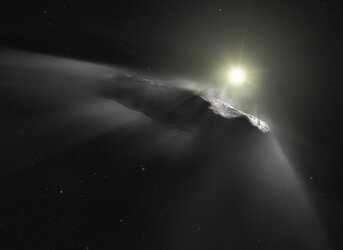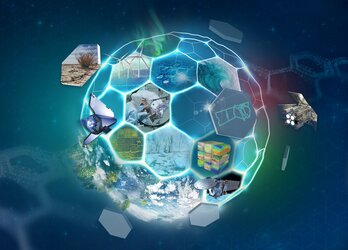Accept all cookies Accept only essential cookies See our Cookie Notice

About ESA
The European Space Agency (ESA) is Europe’s gateway to space. Its mission is to shape the development of Europe’s space capability and ensure that investment in space continues to deliver benefits to the citizens of Europe and the world.
Highlights
ESA - United space in Europe
This is ESA ESA facts Member States & Cooperating States Funding Director General Top management For Member State Delegations European vision European Space Policy ESA & EU Space Councils Responsibility & Sustainability Annual Report Calendar of meetings Corporate newsEstablishments & sites
ESA Headquarters ESA ESTEC ESA ESOC ESA ESRIN ESA EAC ESA ESAC Europe's Spaceport ESA ESEC ESA ECSAT Brussels Office Washington OfficeWorking with ESA
Business with ESA ESA Commercialisation Gateway Law at ESA Careers Cyber resilience at ESA IT at ESA Newsroom Partnerships Merchandising Licence Education Open Space Innovation Platform Integrity and Reporting Administrative Tribunal Health and SafetyMore about ESA
History ESA Historical Archives Exhibitions Publications Art & Culture ESA Merchandise Kids Diversity ESA Brand Centre ESA ChampionsLatest
Space in Member States
Find out more about space activities in our 23 Member States, and understand how ESA works together with their national agencies, institutions and organisations.
Science & Exploration
Exploring our Solar System and unlocking the secrets of the Universe
Go to topicAstronauts
Missions
Juice Euclid Webb Solar Orbiter BepiColombo Gaia ExoMars Cheops Exoplanet missions More missionsActivities
International Space Station Orion service module Gateway Concordia Caves & Pangaea BenefitsLatest
Space Safety
Protecting life and infrastructure on Earth and in orbit
Go to topicAsteroids
Asteroids and Planetary Defence Asteroid danger explained Flyeye telescope: asteroid detection Hera mission: asteroid deflection Near-Earth Object Coordination CentreSpace junk
About space debris Space debris by the numbers Space Environment Report In space refuelling, refurbishing and removingSafety from space
Clean Space ecodesign Zero Debris Technologies Space for Earth Supporting Sustainable DevelopmentLatest
Applications
Using space to benefit citizens and meet future challenges on Earth
Go to topicObserving the Earth
Observing the Earth Future EO Copernicus Meteorology Space for our climate Satellite missionsCommercialisation
ESA Commercialisation Gateway Open Space Innovation Platform Business Incubation ESA Space SolutionsLatest
Enabling & Support
Making space accessible and developing the technologies for the future
Go to topicBuilding missions
Space Engineering and Technology Test centre Laboratories Concurrent Design Facility Preparing for the future Shaping the Future Discovery and Preparation Advanced Concepts TeamSpace transportation
Space Transportation Ariane Vega Space Rider Future space transportation Boost! Europe's Spaceport Launches from Europe's Spaceport from 2012Latest
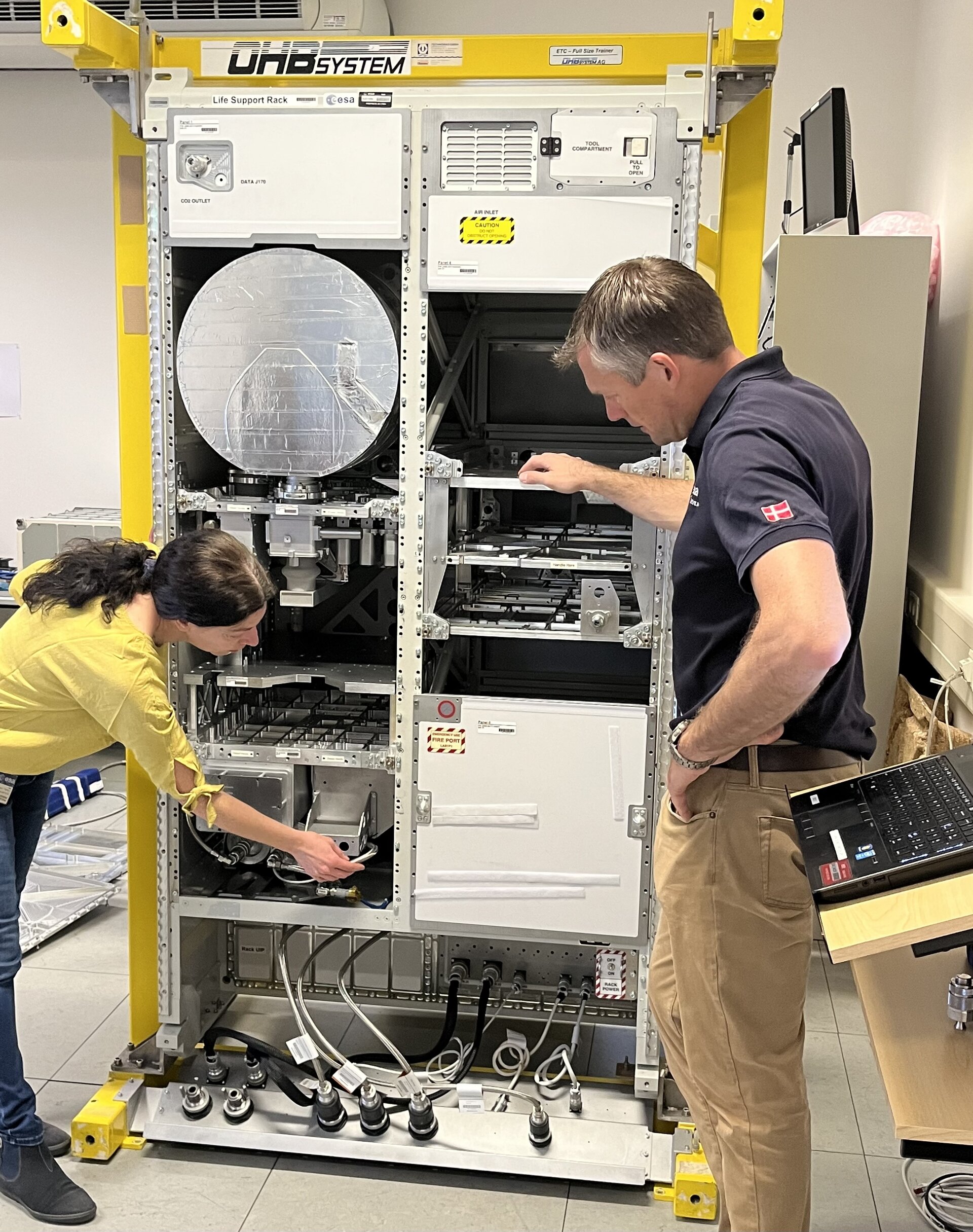
Practice makes perfect
Thank you for liking
You have already liked this page, you can only like it once!
ESA astronaut Andreas Mogensen was at the European Astronaut Centre in Cologne, Germany in March, training for his Huginn mission to the International Space Station, planned to launch later this summer.
Along with every astronaut mission comes its own selection of scientific experiments that are carried out during the stay on the International Space Station. Astronauts are trained on the science behind the experiment and how to run the experiments before launch. Some of the Huginn experiments are already on board the Space Station, while others will be sent up on cargo spacecraft during Andreas Mogensen’s mission.
One of the European facilities running on the International Space Station is the Life Support Rack (LSR), which contains ESA’s Advanced Closed Loop System. It filters the air on the Space Station for CO2, and through further processing, creates clean oxygen for the astronauts to breathe and water to be re-used in the life support system. By recycling the CO2 expelled by the astronauts every day, the system saves around 400 litres of water over a year that would otherwise need be launched to the Space Station.
“The Advanced Closed Loop System is an important system that removes the CO2 we breathe out and recycles it into oxygen. It is a critical piece of hardware on the International Space Station, that ensures our continuous presence in space” says Andreas .
As taught by ESA’s payload instructor Serena Bertone, Andreas learned how to exchange parts of and maintain the life support system to keep it running. The regenerative life support system was installed in 2018 by ESA astronaut Alexander Gerst during his Horizons mission.
Andreas Mogensen’s upcoming Huginn mission has over 30 different ESA experiments planned, all requiring training to be performed while Andreas is on the International Space Station. ESA instructors went over some of the ESA experiments with Andreas and his astronaut colleagues, to prepare them for taking care of the maintenance in the Columbus Module, installing and running experiments, from fluid science and robotics to 3D-printing.
-
CREDIT
ESA - H.Hansen -
LICENCE
ESA Standard Licence
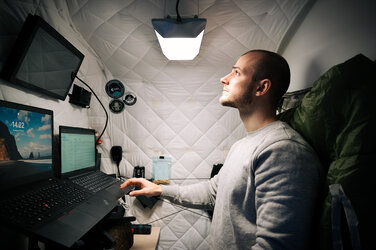
Circadian Light Experiment
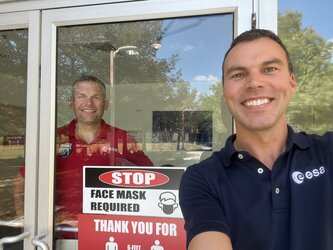
Andreas Mogensen in quarantine for Huginn launch
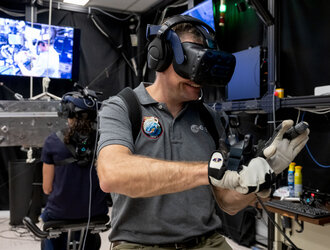
Better SAFER than sorry
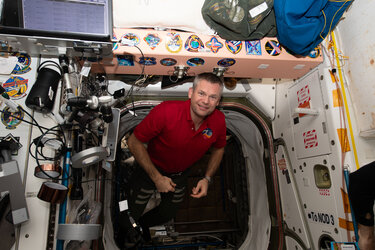
Andreas Mogensen floating by
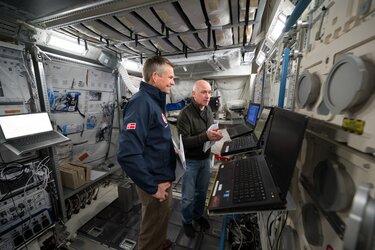














 Germany
Germany
 Austria
Austria
 Belgium
Belgium
 Denmark
Denmark
 Spain
Spain
 Estonia
Estonia
 Finland
Finland
 France
France
 Greece
Greece
 Hungary
Hungary
 Ireland
Ireland
 Italy
Italy
 Luxembourg
Luxembourg
 Norway
Norway
 The Netherlands
The Netherlands
 Poland
Poland
 Portugal
Portugal
 Czechia
Czechia
 Romania
Romania
 United Kingdom
United Kingdom
 Slovenia
Slovenia
 Sweden
Sweden
 Switzerland
Switzerland















